Scalping, a trading strategy favored by many, is characterized by its fast-paced nature. Traders who employ this method execute numerous trades within a single day, capitalizing on minor price fluctuations to accumulate profits. The allure of scalping lies in its potential for quick returns, as well as the thrill of its high-frequency trading environment. However, it’s not for the faint-hearted. It requires a keen eye for market trends, swift decision-making skills, and a solid understanding of trading principles.
In this article, we delve into the mechanics of two effective scalping strategies that have proven to be profitable for many traders. These strategies, when applied correctly, can help traders navigate the rapid currents of the trading world and come out on top. Additionally, we provide valuable tips and insights aimed at enhancing your scalping skills. Whether you’re a seasoned trader looking to refine your strategies or a novice eager to learn the ropes, this article serves as a comprehensive guide to becoming a successful scalper.
Triple EMA Scalping Strategy
Understanding the Basics
The Triple EMA Scalping Strategy is a powerful tool in a trader’s arsenal, leveraging the capabilities of Exponential Moving Averages (EMA). This strategy utilizes three distinct EMAs – the 25, 50, and 100 period – all plotted on a 5-minute timeframe. These specific periods have been chosen for their ability to accurately reflect short-term price movements, which are crucial for the rapid trading nature of scalping. The use of multiple EMAs allows traders to assess and compare different periods, providing a more comprehensive view of the market trends.
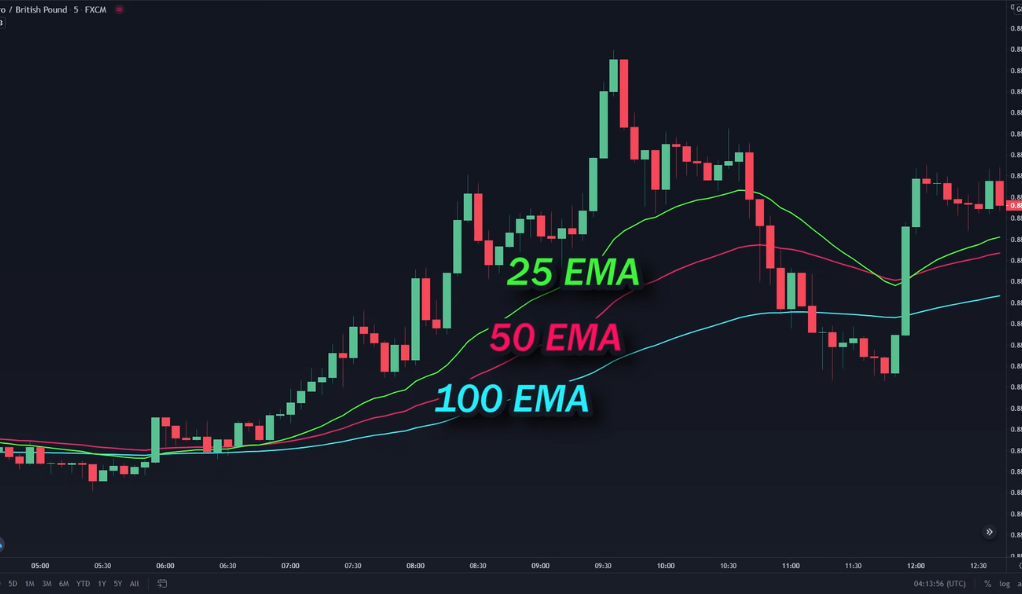
Exponential Moving Averages, unlike their Simple Moving Average counterparts, assign more significance to recent price data. This weighting makes them highly responsive to new information, allowing traders to quickly adapt to changing market conditions. This responsiveness is particularly beneficial in scalping, where the success of a trade can often hinge on the trader’s ability to react swiftly to new price data. By giving more weight to recent price changes, EMAs can help scalpers identify potential trading opportunities faster, thereby increasing their chances of securing profitable trades.
Identifying the Trend
The first step in this strategy is to identify an existing trend. This is done by observing the direction of the three EMA lines. They should all be heading in the same direction and be separated from each other. This indicates a strong trend, which is what we want for scalping.
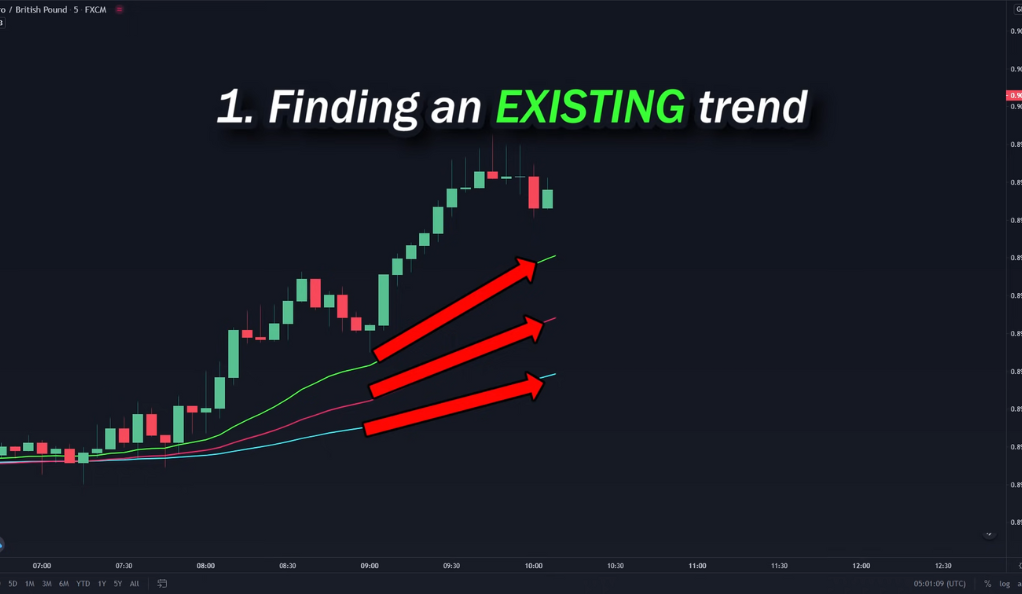
Avoiding Unfavorable Markets
Not all markets are suitable for this strategy. We want to avoid ranging markets, where the EMA lines are heading sideways, and markets where the EMA lines are crossing each other. These conditions indicate uncertainty and lack of a clear trend, making them risky for scalping.
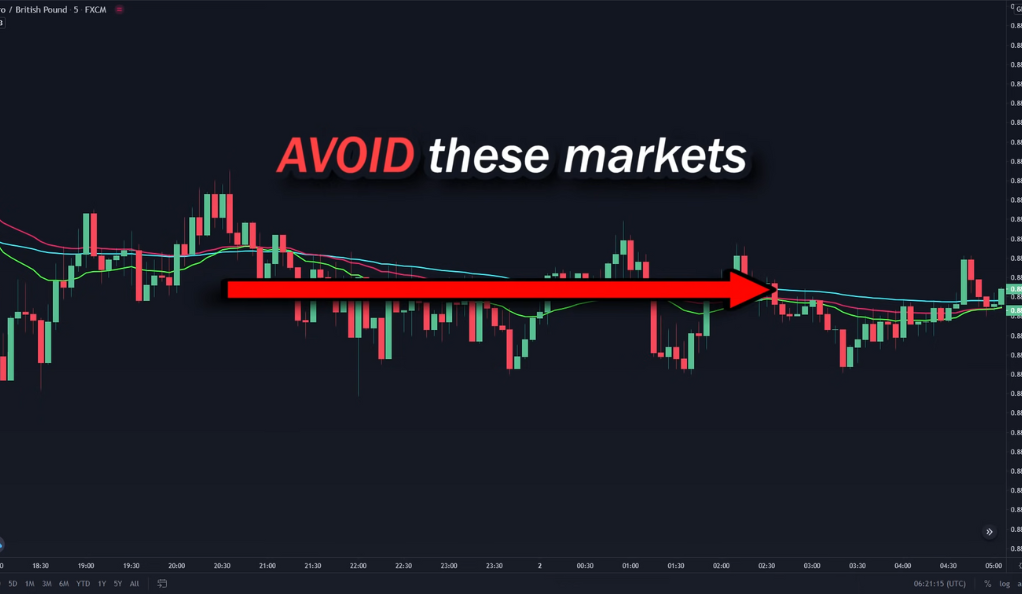
Spotting the Right Setup
The position of the candles relative to the EMA lines is crucial. We want to find a setup where the candles are fully outside of the 25 EMA. This indicates strong momentum in the direction of the trend, which is what we need for a successful scalp trade.
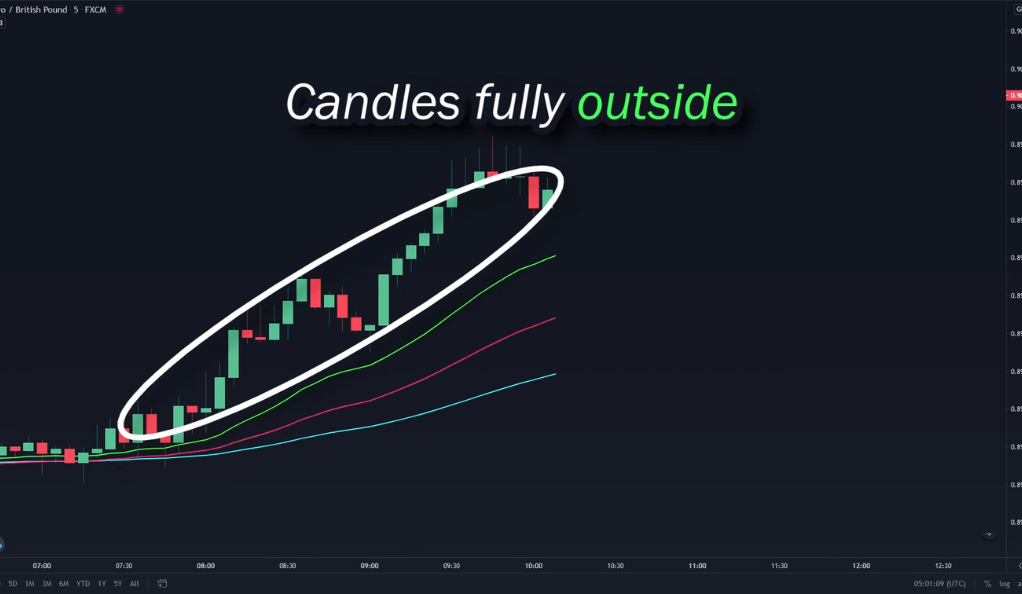
The Entry Signal
The entry signal in this strategy is when the price makes a pullback and closes below the 25 or 50 EMA. This pullback is a temporary reversal in the price, providing an opportunity to enter the trade at a better price.
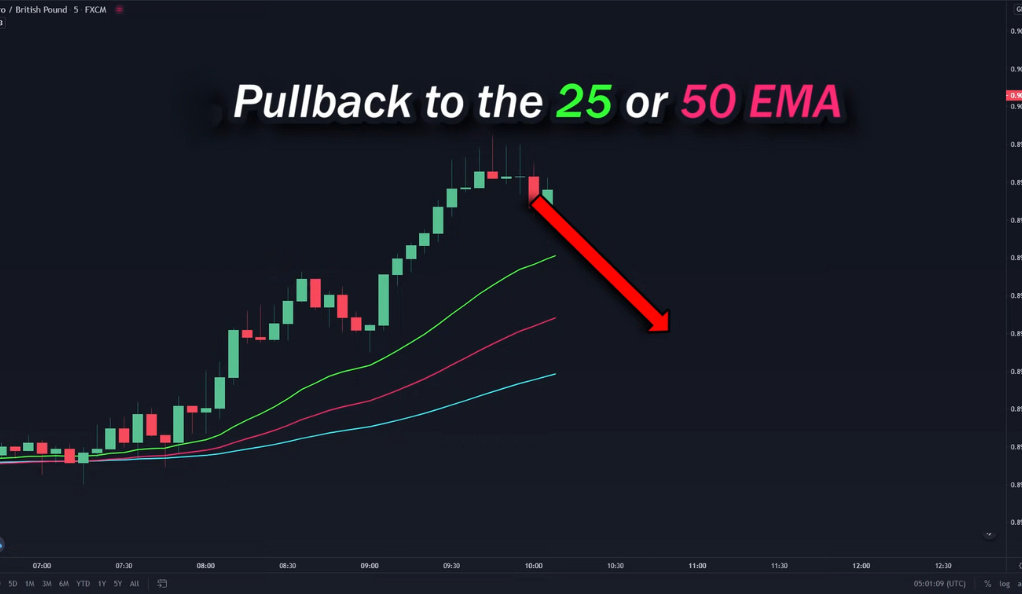
Making the Trade
Once the price goes back to the 25 EMA, it’s time to take a buy position. However, if the price breaks below the 100 EMA, it’s time to cancel the setup. This is because a break below the 100 EMA may indicate a change in the trend.
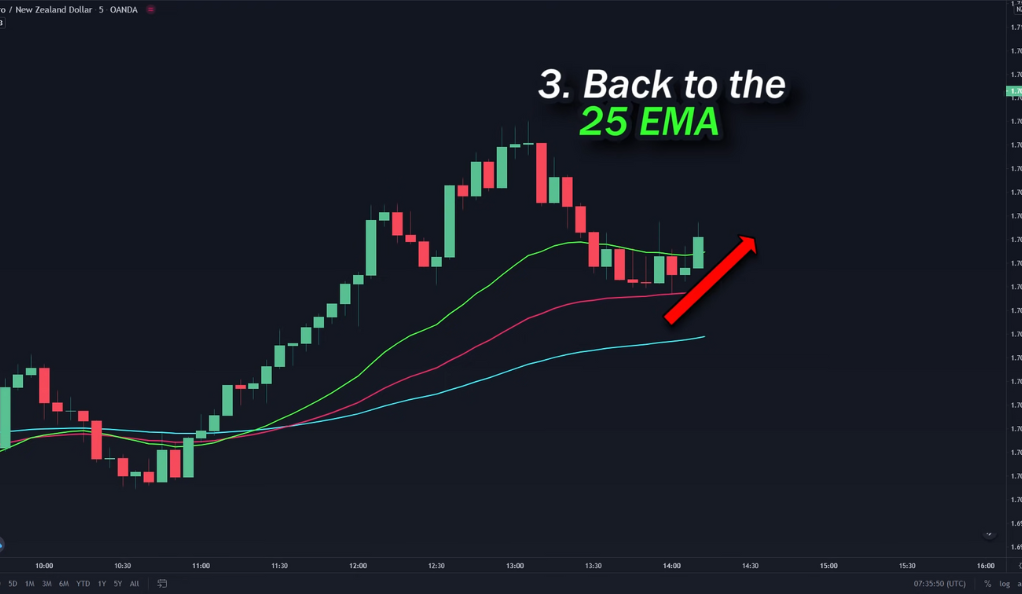
Setting the Stop Loss and Profit Target
In this strategy, the stop loss is set at the 50 EMA, and the profit target is set at 1.5 times the stop loss. This ensures a good risk-reward ratio, which is crucial for long-term trading success.
RSI, 200 EMA, and Engulfing Pattern Strategy
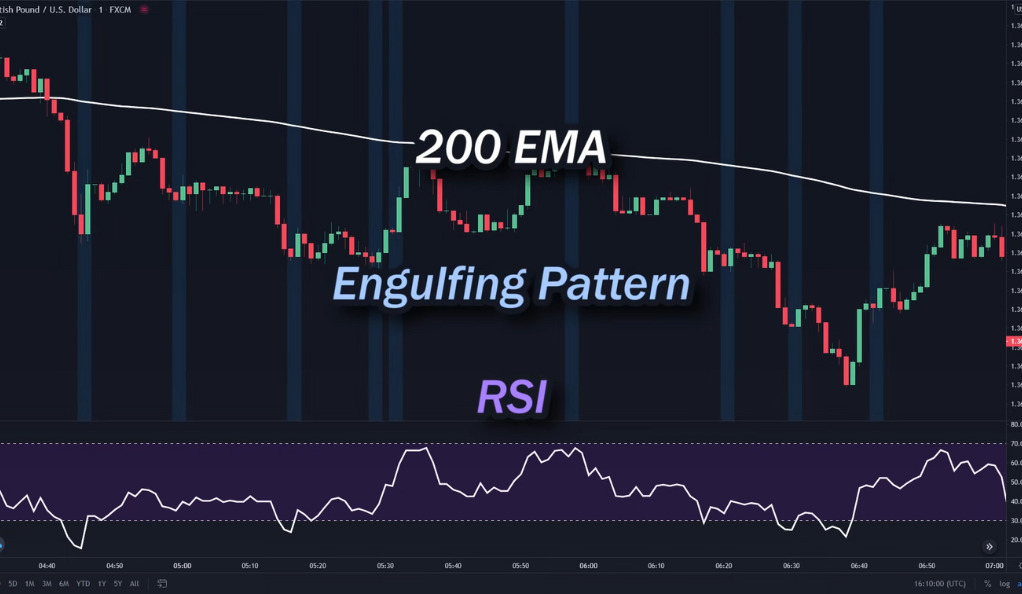
The Tools
This strategy involves using the Relative Strength Index (RSI) with a setting of 50, the 200 EMA, and the engulfing pattern. The RSI is a momentum oscillator that measures the speed and change of price movements, while the engulfing pattern is a candlestick pattern that signals a potential reversal.
The Entry Setup
The entry setup in this strategy depends on the position of the price relative to the 200 EMA, the appearance of an engulfing pattern, and the position of the RSI. If the price is above the 200 EMA, a bullish engulfing pattern is shown, and the RSI is above the 50 line, it’s time to take a buy position.
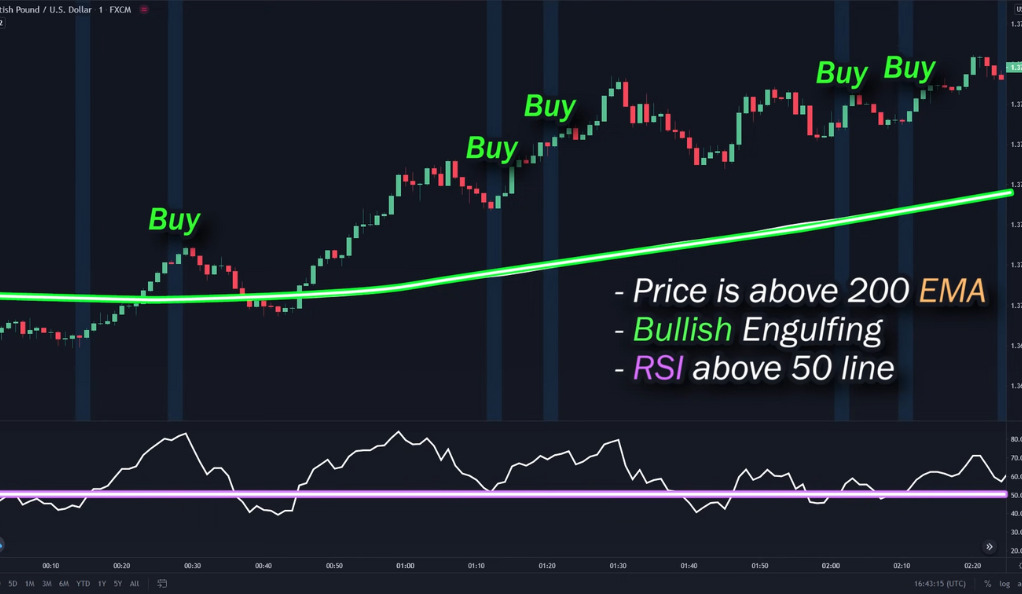
The Trade
Similarly, if the price is below the 200 EMA, a bearish engulfing pattern is shown, and the RSI is below the 50 line, it’s time to take a sell position. This setup indicates a potential downtrend, providing an opportunity to profit from falling prices.
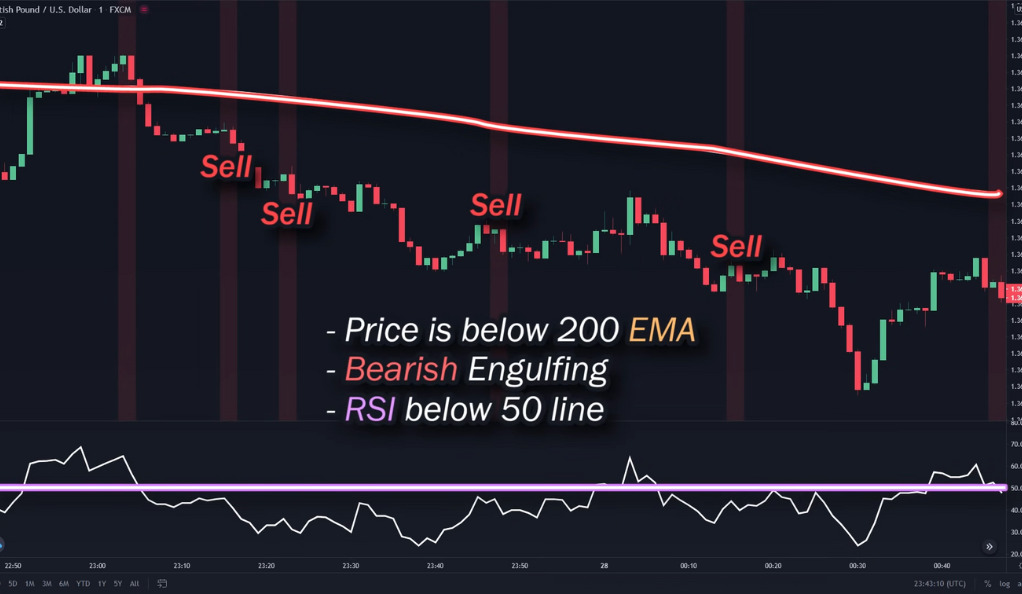
The Exit Strategy
Once you’ve entered a trade, the stop loss is set below (for buy positions) or above (for sell positions) your entry candle, and the profit target is set at 2 times your stop loss. This ensures a good risk-reward ratio, which is crucial for long-term trading success.
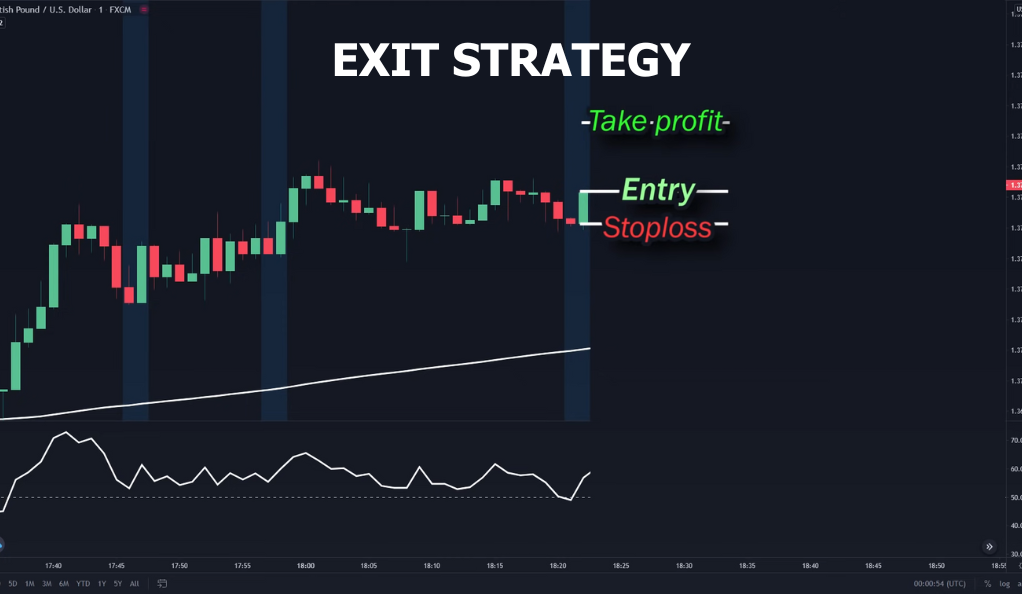
Five Quick Tips for Better Scalping
- Selectivity in Trades
Scalping involves making numerous trades within a day. However, this doesn’t mean you should take every trade that comes your way. Be selective and only take trades that you can manage.
- Risk Management
Never risk more than 1% of your capital per trade. Ideally, risk only 0.5% per trade. This ensures that even a series of losses won’t significantly deplete your trading capital.
- Knowing When to Stop
Scalping can be intense and tiring. It’s important to know when to stop trading to avoid fatigue and loss of focus. Remember, there will always be other opportunities in the market.
- Choosing the Right Broker
When scalping, every pip counts. Therefore, it’s crucial to use a broker with a low spread. A wide spread can eat into your profits and make it harder to be profitable.
- Sticking with One Pair
When scalping, entry signals will appear very often. Therefore, there’s no need to worry about missing entry signals from other pairs. Choose one pair that you’re comfortable with and stick with it.
Conclusion
Scalping, when executed correctly, can be a highly profitable trading strategy. It’s a method that thrives on the volatility of the market, making numerous trades to capitalize on small price movements. The two strategies highlighted in this article – the Triple EMA Scalping Strategy and the RSI, 200 EMA, and Engulfing Pattern Strategy – offer a robust foundation for those interested in exploring the realm of scalping. These strategies, each with their unique approach, can help traders navigate the fast-paced and often unpredictable world of scalping, turning volatility into an advantage.
However, it’s crucial to remember that successful trading isn’t solely about employing the right strategies. It’s also about effective risk management, maintaining discipline, and ensuring consistency in your trading approach. Risk management involves setting appropriate stop losses and profit targets to protect your capital. Discipline is about sticking to your trading plan and not letting emotions drive your decisions. Consistency means applying your strategies and principles regularly, regardless of whether you’re facing a winning streak or a losing one. With these elements in place, along with the two powerful strategies, you’re well on your way to becoming a successful scalper. Happy trading!
Ainu Token aims to offer impartial and trustworthy information on cryptocurrency, finance, trading, and shares. However, we don't provide financial advice and recommend users to conduct their own studies and thorough checks.

Comments (No)